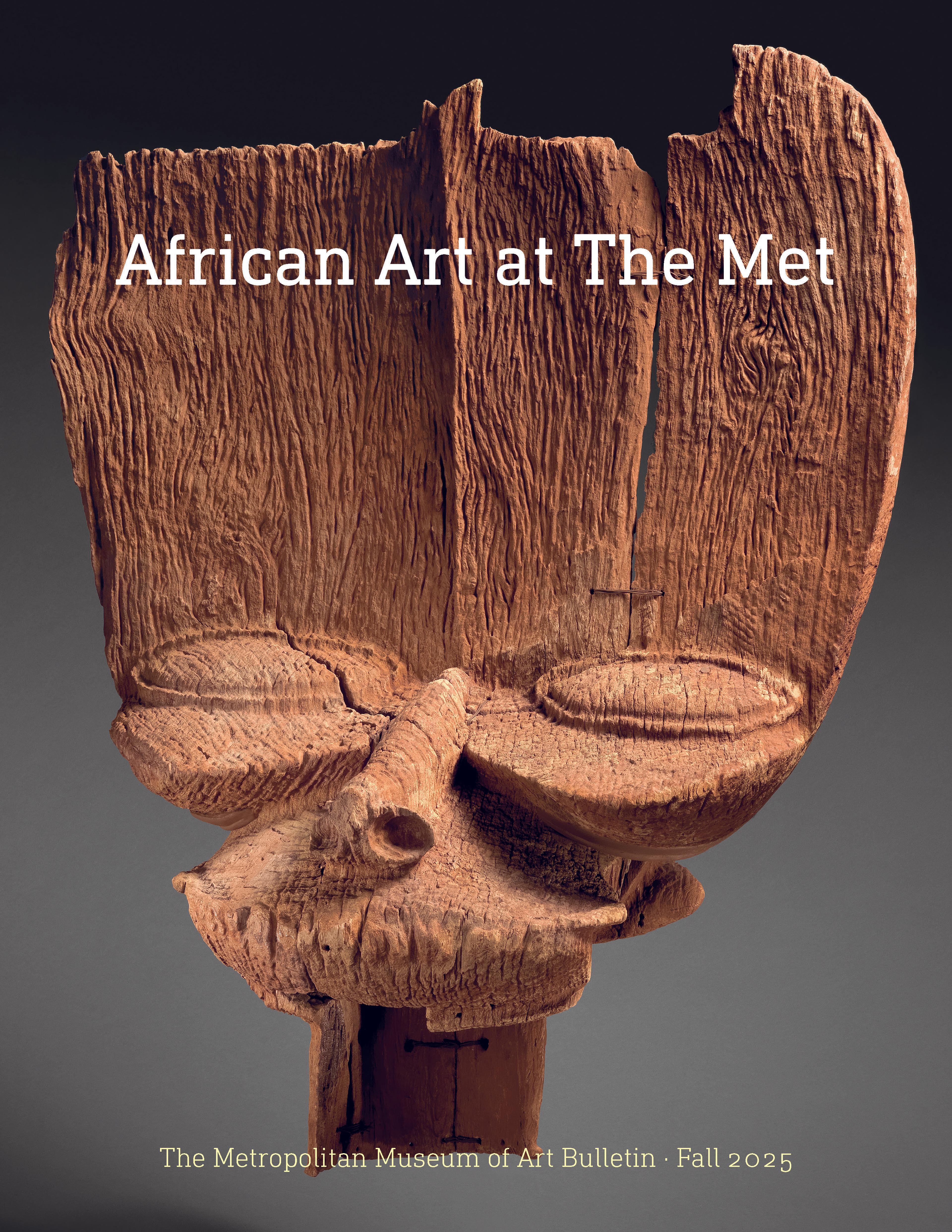Funey soo window frame
The densely populated city of Timbuktu is defined by narrow, winding streets tightly circumscribed by houses constructed using sundried bricks. The most lavish of these are built in two stories, and their austere facades are only elaborated by a single, centrally located door directly above which is situated a funey soo window frame. That second-story aperture marks “the center of the outside wall of the tafarafara, the house-owner's upper-level audience room” (Prussin 1986, p. 143). Such windows maintain a cooler, more hospitable space by allowing air to circulate through the grilles while simultaneously blocking the intense heat of the Sahelian sun.
The majority of such commanding residences are located in the Saré-kaina (Sané-gungu) quarter, historically associated with Ghadames merchants traveling between Timbuktu and North Africa. That connection to regions north of the Sahara is reinforced by the style of funey soo frames. Horseshoe arches and rectangular grids of eight-pointed stars are elements commonly found in the lattice-work windows of residential architecture from Morocco to Saudi Arabia. Formed from two intersecting squares, the eight-pointed star, or khatim, is a cosmological variant of the three-by-three magic square employed by Muslim scholars, marabouts, and diviners to align a supplicant with broader esoteric forces. If the perimeters of both squares forming the khatim are fully marked, they form nine polygons—one octagon and eight triangles—parallel to the nine squares that comprise a three-by-three grid. Applied to a transition point on the outermost wall of a home, khatim served to protect the occupants and publicly proclaim their Islamic faith.
Wealthy merchants and other elites commissioned funey soo from blacksmiths trained in both woodcarving and metallurgy. That dual skillset is evident in both the treatment of the wood as well as the application of iron alloy to the frame’s surface. Spiraling scrolls embellish the outer and central wooden bars. Circular and diamond-shaped sheet metals elaborate the two shutters behind the horseshoe arch. The configuration of four circles set around a concave diamond shape echoes the reference to three-by-three magic squares and khatim.
Jenny Peruski, Assistant Curator for the Arts of Africa, 2025
The majority of such commanding residences are located in the Saré-kaina (Sané-gungu) quarter, historically associated with Ghadames merchants traveling between Timbuktu and North Africa. That connection to regions north of the Sahara is reinforced by the style of funey soo frames. Horseshoe arches and rectangular grids of eight-pointed stars are elements commonly found in the lattice-work windows of residential architecture from Morocco to Saudi Arabia. Formed from two intersecting squares, the eight-pointed star, or khatim, is a cosmological variant of the three-by-three magic square employed by Muslim scholars, marabouts, and diviners to align a supplicant with broader esoteric forces. If the perimeters of both squares forming the khatim are fully marked, they form nine polygons—one octagon and eight triangles—parallel to the nine squares that comprise a three-by-three grid. Applied to a transition point on the outermost wall of a home, khatim served to protect the occupants and publicly proclaim their Islamic faith.
Wealthy merchants and other elites commissioned funey soo from blacksmiths trained in both woodcarving and metallurgy. That dual skillset is evident in both the treatment of the wood as well as the application of iron alloy to the frame’s surface. Spiraling scrolls embellish the outer and central wooden bars. Circular and diamond-shaped sheet metals elaborate the two shutters behind the horseshoe arch. The configuration of four circles set around a concave diamond shape echoes the reference to three-by-three magic squares and khatim.
Jenny Peruski, Assistant Curator for the Arts of Africa, 2025
Artwork Details
- Title: Funey soo window frame
- Artist: Mande numu (blacksmith)
- Date: 19th–early 20th century
- Geography: Mali, Timbuktu
- Culture: Mande peoples
- Medium: Wood, iron alloy, pigment
- Dimensions: H. 38 15/16 x W. 28 x D. 1 3/4 in. (99 x 71.1 x 4.5 cm)
- Classification: Wood-Architectural
- Credit Line: The Michael C. Rockefeller Memorial Collection, Gift of Edmund van Gilder, 1965
- Object Number: 1978.412.508
- Curatorial Department: The Michael C. Rockefeller Wing
More Artwork
Research Resources
The Met provides unparalleled resources for research and welcomes an international community of students and scholars. The Met's Open Access API is where creators and researchers can connect to the The Met collection. Open Access data and public domain images are available for unrestricted commercial and noncommercial use without permission or fee.
To request images under copyright and other restrictions, please use this Image Request form.
Feedback
We continue to research and examine historical and cultural context for objects in The Met collection. If you have comments or questions about this object record, please contact us using the form below. The Museum looks forward to receiving your comments.
